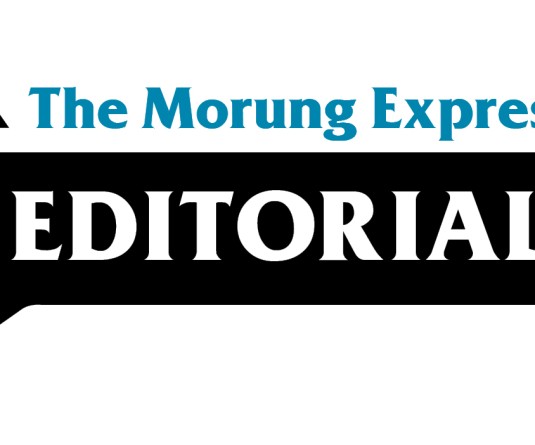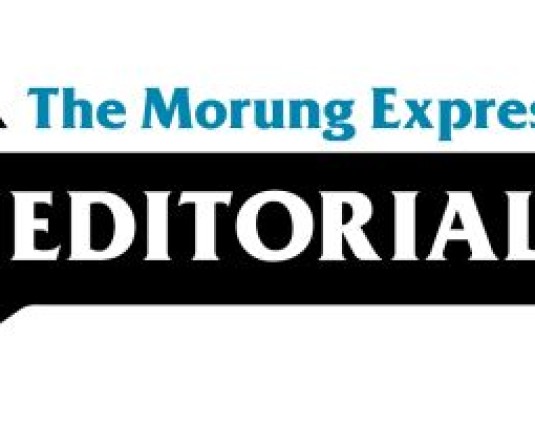
By Moa Jamir
Nagaland’s tourism status, as reflected in the latest ‘India Tourism Data Compendium 2025’ released by the Union Ministry of Tourism, is one of both growth and limitation. In 2024, the state recorded 1.32 lakh tourist arrivals, up from 1.05 lakh in 2023. The rise, comprising 1.26 lakh domestic and 6000 foreign visitors, signals progress. Yet, Nagaland ranked second lowest among the eight North-East states in overall inflows, ahead only of crisis-hit Manipur.
The official State Department’s monthly inflow figures for 2024 highlight the underlying imbalance. Or over 70% arrived specifically for the Hornbill Festival. Foreign tourist visits showed similar dependence, with 3032 (53%) of the year’s 5,623 arriving in December, and 2527 (44.83%) during the festival itself.
Between January and November, Nagaland received just 48000 visitors, averaging fewer than 4400 per month. Tourist arrivals peaked in November (7540) and March (5200) but fell as low as 2700 in February and 2500 in June. Domestic arrivals during these months averaged around 4155, while foreign arrivals stood at 2591, roughly 235 per month.
Such seasonal dependence raises questions. Can a tourism sector built around a single festival sustain itself, let alone generate jobs and growth? The Hornbill Festival has undoubtedly placed Nagaland on the global tourism map, but the lack of a wider tourism calendar has left the sector exposed and unable to generate year-round opportunities.
Neighbouring states present a contrast. Assam attracted more than 76 lakh domestic visitors in both 2023 and 2024, accounting for over 60% of the region’s inflows. Meghalaya and Sikkim, each had over 15 lakh visitor while Mizoram doubled its domestic arrivals within a year from 2.09 lakh to 4.22 lakh. Tripura and Arunachal Pradesh also had around 7 lakh and 9 lakh respectively.
However, Nagaland’s concern may not lie solely in its calendar but also in its data. The low figures could reflect record-keeping gaps. Dimapur and adjoining districts, for instance, long operated with a relaxed Inner Line Permit (ILP) system, allowing entries and exits without robust checks. Visitors from neighbouring Assam and Manipur, including those seeking medical treatment in Dimapur and Kohima, may not have been captured in the official count.
In contrast, states such as Mizoram and Arunachal Pradesh maintain stricter ILP monitoring, which may explain their higher domestic tourism data. With Nagaland extending ILP coverage to Dimapur and adjoining areas in 2024, the numbers could see an uptick, though whether ILP registrations will be reflected in tourist data remains uncertain. Monitoring will be key.
Efforts to diversify tourism have been made. Since 2018, “Mini Hornbill” festivals aligned with recognised tribes’ celebrations have been introduced across the year. While a welcome initiative, they have yet to match the scale or visibility of the main December event, which continues to dominate.
The way forward may lie in a deliberate year-round approach. Nagaland’s biodiversity lends itself to eco-tourism, its hills to adventure trekking, its villages to community-based homestays, and its food traditions to culinary tourism. The modest peaks in March and November hint at shoulder seasons that could be nurtured through targeted promotion.
Infrastructure remains critical. Without improved connectivity, affordable accommodation, and reliable services, the state risks discouraging potential visitors. Equally vital is empowering local communities as stakeholders through training, micro-financing, and entrepreneurship support. With the right backing, the entrepreneurial spirit already evident in small enterprises could evolve into sustainable ventures.
While the Hornbill Festival is rightly celebrated as Nagaland’s “crown jewel,” the state’s identity as a destination need not rest on it alone. Thematic circuits, heritage sites, nature trails, district-level festivals, and cultural experiences could be promoted more actively. Accurate data and consistent monitoring will also help shape a clearer picture of tourism’s potential. Nagaland’s tourism cannot afford to remain a one-month spectacle, celebrated yet limited. The true measure of success will be when visitors come not only in December, but in every season.
For any feedback, drop a line to jamir.moa@gmail.com




